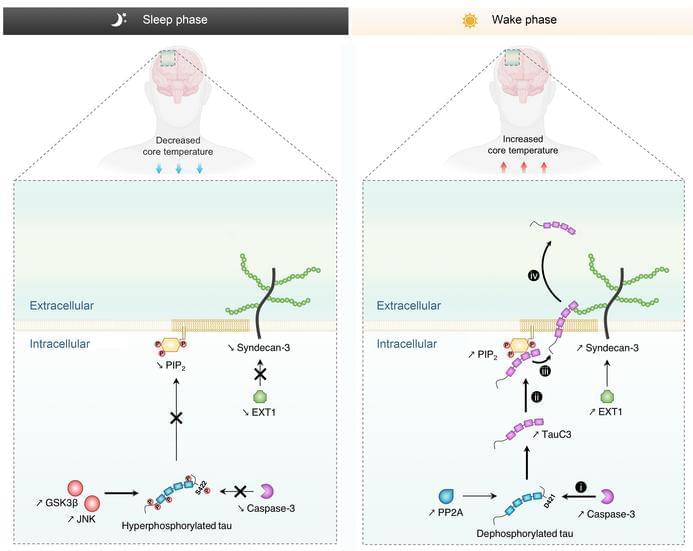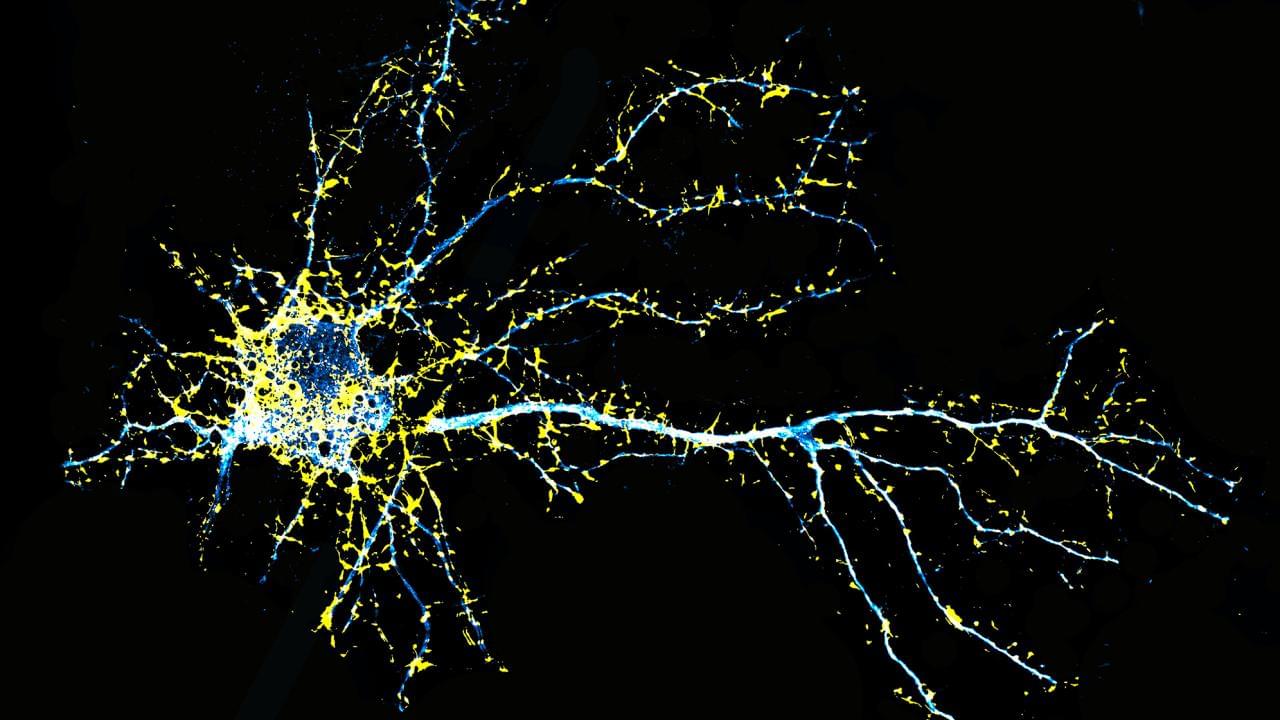Geoffrey Canet et al. discover wakefulness body temperature upregulates neuronal tau secretion and correlates with tau levels, highlighting the importance of sleep and thermoregulation in Alzheimer’s disease:
The figure shows temperature-dependent increase of colocalization between SDC3 (purple) and TauC3 (yellow) in primary mouse cortical neurons.
1Centre de Recherche du CHU de Québec – Université Laval, Axe Neurosciences, Québec, Québec City, Canada.
2Université Laval, Faculté de Médecine, Département de Psychiatrie et Neurosciences, Québec, Québec City, Canada.
3Université Laval, Faculté de Médecine, Département de Médecine Moléculaire, Québec, Québec City, Canada.







